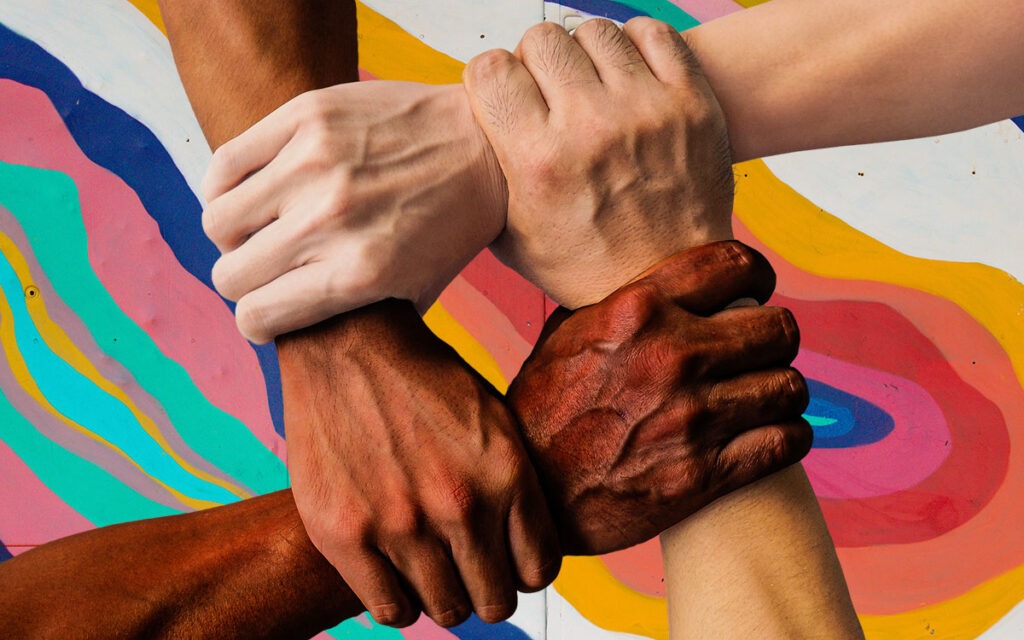
How do you shift the culture of a mostly White organization to become truly multiracial? It is not easy. Certainly, having “liberal” or “progressive” values is not enough.
Here I want to offer a story about one organization’s journey in this direction: the Mayors Innovation Project. For nearly 20 years, MIP has provided a gathering place for progressive mayors to share policy ideas, with clear commitments to advancing racial equity and serving mayors of color well. Yet, until 2019, MIP remained overwhelmingly White. There was a noticeable lack of racial diversity in its membership, leadership, and staff.
Now, in 2023, MIP has made clear progress with increasing racial diversity in the organization, particularly in its membership and leadership. Compared to the endgame of fully dismantling structural racism, the progress is clearly not enough. Compared to many of its peer White-led organizations, MIP has made a lot of progress. If you believe, as I do, that undoing racism is White people’s work, then it is useful for those of us who are White to share successes and challenges in the work. I share this story in that spirit.
Mapping the System
To address how race and racism are playing out in an organization requires mapping the existing system of power, formal and informal, to identify needed areas of change. I was brought in as a consultant and advisor to MIP in 2019. One of my tasks was to create recommendations for making the organization more inviting for mayors of color.
In the past, MIP had taken steps common in mostly White organizations. For example, MIP had intentionally extended invitations to cities and organizations helmed by BIPOC leaders. This often amounted to appointing only one or two people of color at a time to the steering committee, which had the impact of tokenism. As a result, what was a White-led organization remained a White-led organization.
If MIP was going to be truly welcoming for mayors of color to participate, more fundamental, systemic changes were required.
One key first step was to talk to mayors of color. My experience as mayor of Minneapolis from 2014 to 2018 meant I had relationships with several mayors. I spoke at length with six of them and asked about their experiences with MIP, if they had any, or, for those who didn’t, why they hadn’t engaged with the group.
The feedback was invaluable. Most said that yes, they perceived MIP as a mostly White organization, if well-intended. To the extent that MIP was on their radar, it had a good reputation. One mayor noted that organizations compete to work with mayors and that mayors prioritize participation in the larger mayor-serving groups (such as the US Conference of Mayors or the National League of Cities), followed by affinity-based groups like the African American Mayors Association.
Many mayors mentioned the problem of tokenism. “My concern was not being the token minority, because a lot of places think the solution is ‘We’ve got one person,’” said Mayor Chasity Wells-Armstrong, former mayor of Kankakee, IL.
Another mayor noted that despite the perception that mayors of colors are mostly “big city” mayors, the preponderance of mayors of color represent smaller cities and that MIP should make sure to provide offerings that would be relevant to them. Data bear that out. While the four largest US cities—New York, Los Angeles, Chicago, and Houston—are currently represented by Black mayors, one non-exhaustive list shows that in 2021, 98 of 131 cities with Black mayors had fewer than 100,000 residents.
Sign up for our free newsletters
Subscribe to NPQ's newsletters to have our top stories delivered directly to your inbox.
By signing up, you agree to our privacy policy and terms of use, and to receive messages from NPQ and our partners.
Implementing an Action Plan
It is one thing to offer recommendations. Implementation, however, is a place where organizations often stall. Since that initial survey in 2019, MIP has made changes in leadership, membership recruitment, and operations. Over the past four years, MIP implemented the following to support its organizational commitment to racial equity:
- Intentional Recruitment: MIP invited four mayors of color to sit on its 12-member Steering Committee. When inviting them, MIP was clear about its approach: MIP was looking to change the organization’s culture, including that of the Steering Committee. The mayors of color were being asked to help bring new voices of color to the table. We made two key commitments to each mayor. First, MIP committed to avoiding tokenism; this is why MIP appointed four mayors of color to the Steering Committee at the same time. Second, MIP staff and leadership committed to not only bringing the mayors’ voices to the table but also to listening to and being guided by what they had to say about the organization overall and its racial dynamics specifically.
- Changing Programming: MIP shifted the emphasis of its biannual conferences. Each panel now has a significant racial justice component. Since racial inequities are woven into US systems, there is no shortage of ways to create panels that speak to different ways that city policy can be devised to dismantle structural racism. Every topic, even if it isn’t explicitly billed as being about racial equity (like road repaving or the future of self-driving cars) has experts who can speak to questions of racial equity and justice, and moderators who are prepared to ask follow-up questions that delve into these concerns. Also, keynote speakers are selected with a racial equity lens. In addition to considering BIPOC speakers, this means inviting speakers who work on policies that reduce racial inequities.
- Meeting the Needs of Small-Town Mayors of Color: While MIP had always understood that mayors govern cities of all sizes, the organization renewed its efforts to create programmatic offerings to meet the needs of mayors from smaller cities. This applies to conferences, online webinars and meetings, and ongoing cohort work such as New Mayors cohorts and the Women Mayors Network.
- Network Building: Though established for different reasons, the New Mayors cohorts and the Women Mayors Network have connected mayors of color with the MIP network. The New Mayors cohorts establish personal ties with MIP from the early days of a mayor’s first term, offering practical support in an intimate, safe environment. The Women Mayors Network created an affinity group for women mayors that had not existed before in a consistent way, adding value to women mayors’ relationships with MIP. Both groups have high levels of participation from mayors of color, and, like the biannual conferences, their offerings are designed to consider the needs of mayors of color.
Early Outcomes and Some Preliminary Lessons Learned
To date, the results of these changes have been promising. Hard data show that, in 2019, the MIP Steering Committee had one person of color on it. Every subsequent iteration of the Steering Committee has had four.
While MIP doesn’t track the race of participants in its conferences and online offerings, anecdotal data suggest a much higher participation of people of color. According to feedback from mayors of color, this change is reflected in how MIP interacts with its membership base. Critically, MIP has invested more in staff resources to boost hands-on communication and support for mayors between meetings and gathers feedback about that support at in-person meetings.
Members of color also report more affinity with the organization and more satisfaction with its offerings. “I do see diversity at the meetings. When I attend MIP meetings, I don’t feel like, ‘Oh my God, I am the only one here, and I’ve got to seek out my people.’ It is a good reflection,” said Wells-Armstrong. She added, “One thing that [MIP] did a good job at with expanding access to other people was making sure to bring in people from different-size cities, cities that were run differently. In my city, I was a strong mayor, so I was also the administrator, but other cities had a manager or a separate administrator.”
Of course, MIP’s transformation—from a predominantly White organization to a multiracial one—remains a work in progress. Panels at workshops would still benefit from more racial diversity among their members, and six of MIP’s seven staff members are White. Tracking data about participation would provide more concrete information. That said, many other mostly White progressive organizations that are willing to do the work of becoming truly multiracial could learn from the changes MIP has made so far.
A few pointers:
First, consult and check in with people of color regularly—and act based on what you hear. Develop strong relationships with people of color in your field and ask them what would make your organization more inviting for them as employees, members, and participants. Of course, who does the asking matters. The fact that I had worked with many mayors of color meant I already had relationships that I could draw on. To say the obvious, people typically respond more openly to someone with whom they already have a relationship. It is also vitally important that the organization receives the feedback without defensiveness—and is willing to act on it.
Second, note the themes raised in those conversations and develop an action plan based on them. This seems like a basic point to make, but in my experience as a racial equity consultant, it is a common place where many organizations fall short. To this end, make sure that you recruit multiple people of color into your organization. A cohort approach removes the weight of tokenism from people’s shoulders and is far more likely to move the needle on racial equity than relying on one or two individuals to shift an entire organization’s culture.
Finally, for organizations to fully attend to the voices of people of color and create structures and cultures that have good outcomes for BIPOC leaders, White people in the organization must do the internal work of making racial equity commitments real. The responsibility for creating a racially equitable culture, as Debby Warren observed in NPQ last year, ultimately lies with White people like me, not people of color. For White progressive organizations to practice their values, shift their workplace cultures, and become multiracial, it is important that everyone in the organization—including and especially White people—be fully invested in making that change a reality.








